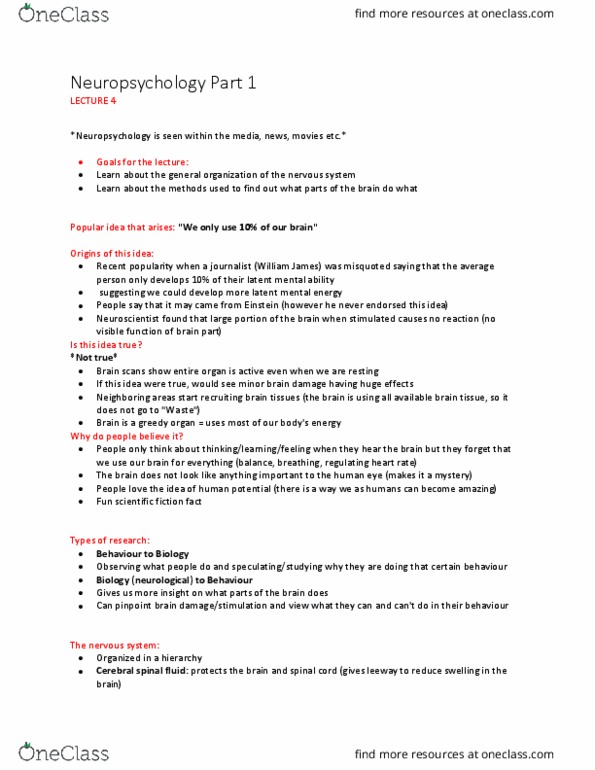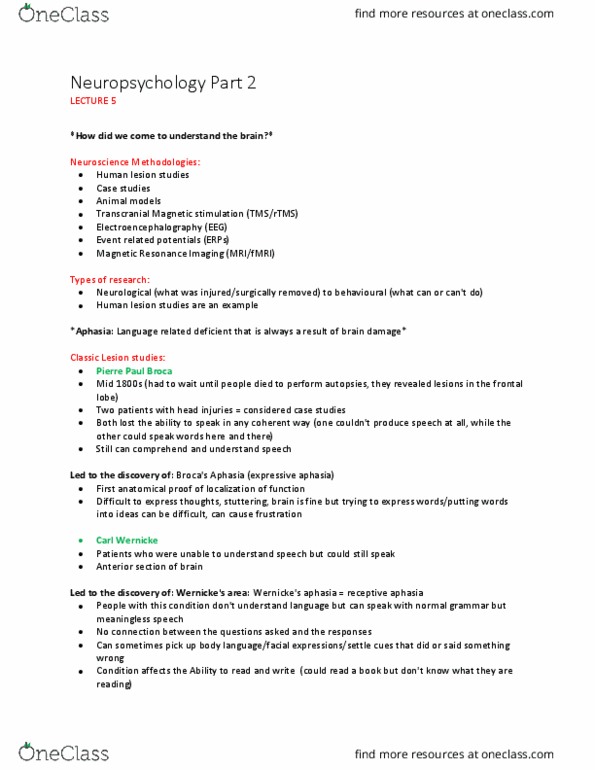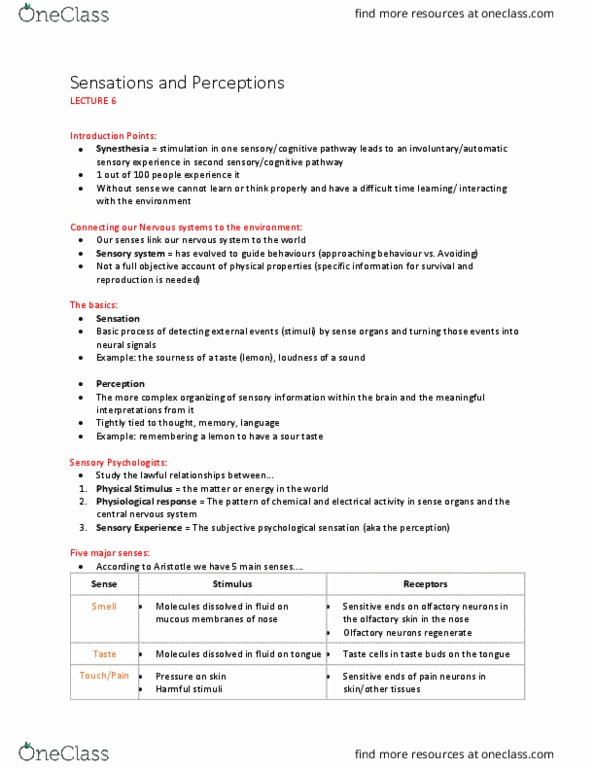PSYCH101 Lecture Notes - Lecture 5: Oddball Paradigm, Hemoglobin, Binge Drinking
PSYCH101 verified notes
5/8View all
Document Summary
Neuroscience methodologies: human lesion studies, case studies, animal models, transcranial magnetic stimulation (tms/rtms, electroencephalography (eeg, event related potentials (erps, magnetic resonance imaging (mri/fmri) Types of research: neurological (what was injured/surgically removed) to behavioural (what can or can"t do, human lesion studies are an example. *aphasia: language related deficient that is always a result of brain damage* Led to the discovery of: broca"s aphasia (expressive aphasia) Side effects: minimal in comparison to drug therapy, insomnia, weight gain, blurred vision, sexual dysfunction: eeg, has existed for a long time. What does it do: measures patterns of electrical activity (eg. sleep, can view different patterns of wave sequences. How does it work: brain is constantly producing electrical activity that can be measured through the scalp. State of arousal, no spatial detail: never use eeg to pin point a specific part of the brain.




